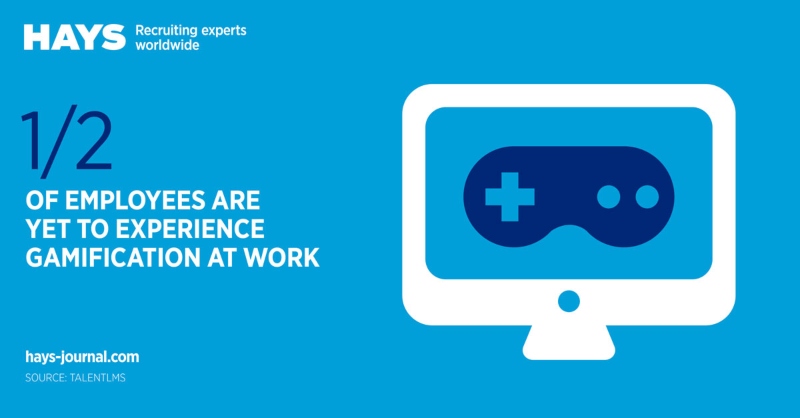Gamification can improve employee participation, but how can organisations implement it?

Gamification has the potential to help organisations with employee participation and motivation, but some businesses are struggling to put it into effect, says recruiting experts Hays.
Gamification is a term that refers to the use of gaming mechanics, such as achievement badges or leader boards, to encourage engagement or increase motivation among its users. If the user enjoys the experience they are more likely to use the application again or retain their learning.
The term ‘Gamification’ was first used in 2002, but the process still isn’t widely used in workplaces as some businesses have failed to find a practical use for it. Yet its potential, particularly in HR, is wide. For example, organisations could use gamification applications to help onboard new employees, gather employee feedback, create team building events, encourage the use of collaborative tools or implement employee training.
Tom Osborne, Managing Director of Hays Malaysia, says, “Gamification can be a really effective engagement tool, for example it can help workforces to develop news skills and work collaboratively by tapping into people’s competitive nature and desire to improve. It can give the user control over what they’re doing, providing them with instant feedback on how they are performing and allowing them to earn recognition when they have completed the task.”
Hays shares just some of the ways businesses can use gamification:
Employee feedback
Gathering regular feedback from employees is essential to understanding an organisation’s workforce. Gamification can have a big impact on the quality of feedback a company collects from its employees. By incentivising employees, they are more likely to provide regular and useful feedback on their workplace and their current morale.
Tom explains, “If an organisation is able to harness the benefits of gamification, it can have a real positive impact on their business. For example, by turning something like gathering vital feedback from employees into a fun and perhaps rewarding game, organisations are increasing the likelihood of them receiving worthwhile feedback – which in turn is an effective attraction and retention tool.”
Learning and development
The most common use for gamification in the workplace is learning and development. Research from Harvard Business School in 2019 highlighted the effectiveness of learning at work using gamification. The study found that applying gamification during the learning process had a strong impact on the willingness of employees to not only engage with learning, but to complete the programmes more consistently.
Tom continued, “By using gamification in the learning and development process, organisations can make it more fun. Humans are naturally competitive, so by adding leader boards and making learning a competition, employees are more likely to participate and retain the lessons they learn. Another advantage is that e-learning is also cheaper than traditional training courses.”
Employee wellbeing
Gamification also has the potential to improve employee physical wellbeing, by turning physical activity into a competition. For instance, there are projects which exist that use gamification to encourage activity among the workforce, such as Step Ahead: Zombies. The project includes a walking challenge, where participants have to escape a virtual zombie invasion and those who don’t walk enough are caught by zombies. The developers of the project have said improvements of 20 per cent in employee engagement were common among participating organisations.
But Tom warned that gamification might not be suitable for all organisations or purposes: “Gamification doesn’t guarantee success and it might not be the right approach for what they are trying to accomplish. Organisations must decide whether it is the right approach for them and if it will help them achieve their intended goal.”
This issue is explored further in the latest Hays Journal.
Last updated on January 21st, 2020
Hays Research
DNA Series
Uncovering the DNA of the Future Workplace

